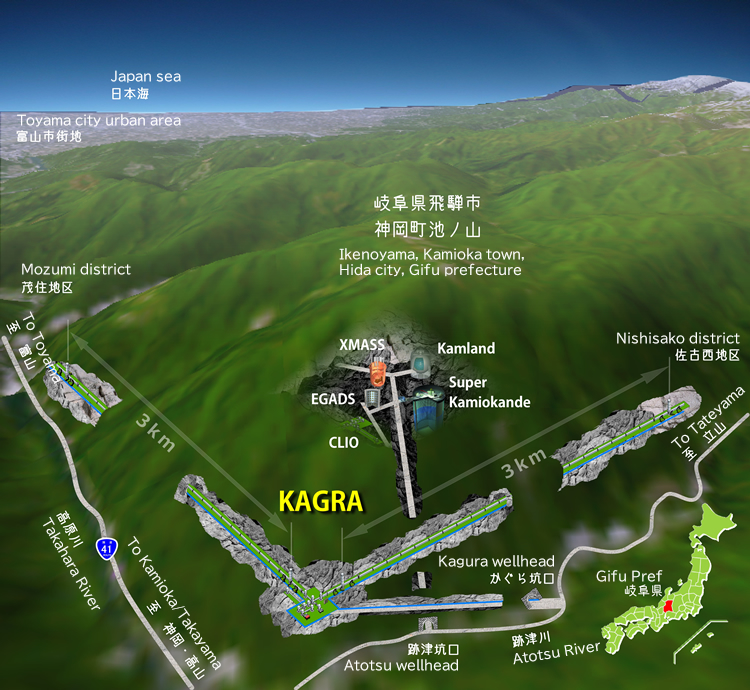Large-scale low-temperature gravitational wave telescope KAGRA
In 2017, three American researchers were awarded the Nobel Prize in Physics for their “significant contribution to gravitational wave observation using the laser interferometer LIGO.” While Dr. Einstein’s theory of general relativity has been experimentally demonstrated, direct observation of gravitational waves is so difficult that it is called Einstein’s Last Homework, and it took 100 years from prophecy to observation realization.
In order to observe gravitational waves directly, countries around the world are working together and Japan’s KAGRA is planning to start observation in 2019 as a low-temperature laser interferometer with the world’s largest 3km L-shaped observation facility.
Research traces the origin of the universe and Professor Kajita
At the Institute of Cosmic Rays, the University of Tokyo, where Professor Kajita is the head of the institute, research is being conducted on the origins of the universe, cosmic rays, and elementary particles, which are the smallest constituent particles of material. In Kamioka-cho, Hida City, Gifu Prefecture, there is a research facility of “Super Kamiokande” of the Kamioka space particle research facility of the research center and a large-scale low-temperature gravitational wave telescope KAGRA for observing gravitational waves.
KAGRA is led by Professor Kajita, and this large-scale research facility that solves the mysteries of the universe is receiving worldwide attension.

Large-scale Low Temperature Gravitational Wave Telescope KAGRA and Mirapro Technologies
To observe gravitational waves, observe the differential changes in the optical path of both arms. The more accurate the distance the laser beam runs, the more accurate it is.
Since the effect of gravitational waves appears as a small change in the distance between the mirror and the mirror installed 3 km away in each arm, the Gravitational Wave Telescope measures this change using laser interferometer technology. However, the measurement accuracy required for that is one tenth of a trillionth of a meter. In order to measure the ridge with such high accuracy, for example, if there is a tint of air in the part where the laser beam passes, the refractive index fluctuation becomes noise, so the space through which the laser beam passes should be ultra-high vacuum condition.
Especially in case of KAGRA, high technology is required to keep the vacuum duct with 80 cm diameter and 3 km length single arm, in an ultra-high vacuum condition.

KAGRA Vacuum Duct

Mirapro Ultra-High Vacuum Chamber
Large-scale Low Temperature Gravitational Wave Telescope KAGRA and Mirapro Technology
On November 6, 2015, a ceremony was held to commemorate the completion of the first phase of the KAGRA Experiment Facility, a large-scale low-temperature gravitational wave telescope. We were awarded a letter of appreciation from the University of Tokyo for contributing to the completion of KAGRA construction with outstanding technology and extensive experience. We are very proud to have contributed to the field of science and technology by utilizing our core welding technology and vacuum technology.

Letter of Appreciation awarded by the University of Tokyo
Large-scale Low Temperature Gravitational Wave Telescope KAGRA and Mirapro Technology
You can watch the video introducing KAGRA on the Science Channel (the Science and Technology Agency’s video site).
[ScienceNews2016]Japan’s Technology approaching Gravitational Waves Gathered at KAGRA (delivered on December 28, 2016)




























